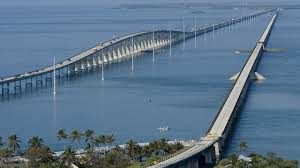For many residents of the Caribbean and Florida the worst part of Hurricane Irma started after the storm passed leaving destruction in its wake. While the devastation was widespread, this post will focus on the Florida Keys as that is the region I know best and the case of the Keys, I believe, gives clues to how we might prepare for a warming planet.
Damage
 The Federal Emergency Management Agency (FEMA), estimated that 25 % of homes on the keys were destroyed and 90% were damaged by the storm. Particularly hard hit were trailer parks and marinas in Cudjoe Key, Big Pine Key and some of the other tiny islands caught by the brunt of the storm.
The Federal Emergency Management Agency (FEMA), estimated that 25 % of homes on the keys were destroyed and 90% were damaged by the storm. Particularly hard hit were trailer parks and marinas in Cudjoe Key, Big Pine Key and some of the other tiny islands caught by the brunt of the storm.
Although the storm hit over two weeks ago, public officials have only opened the road that connects the Keys to the mainland, U.S. 1, this weekend and it appears that many parts of the Keys are still without electricity, water and sewage. Before the storm residents were ordered to evacuate the islands and the 10,000 or so who ignored the order tell tales of a harrowing experience.
113 Miles (182 km)
 Although the damage was severe, the Keys did much better overall than it did in the infamous Hurricane in 1935 that killed over 400 people including a number of veterans who were working on the highway.
Although the damage was severe, the Keys did much better overall than it did in the infamous Hurricane in 1935 that killed over 400 people including a number of veterans who were working on the highway.
Before the highway there was a train line that went out to the Keys built by Henry Flagler, a partner of John D. Rockefeller. The story of the line, The Florida Overseas Railroad, is truly amazing and it was built despite being pounded by a series of hurricanes during its construction which took seven years to build and pioneered a number of innovations in bridge design and construction.
The highway itself, is another engineering marvel and was only completed after the railway line was pushed into bankruptcy by the Hurricane in 1935. Florida purchased the railway bridges and were able to finally complete the road to Key West in 1938. The road starts in Key West and proceeds North towards Miami. The normally 2-3 hour drive includes a number of spectacular bridges as the road jumps from island to island and can be pretty scary in a heavy thundershower.
Resilience

Last August I wrote a post in this space about the Keys and their exposure to rising sea levels and big storms. Despite the damage, a combination of stronger building codes, active management of the mangrove swamps and the governor’s precaution in evacuating the region did a lot to protect the Keys from the storm.
As discussed last week, the science supporting the idea that climate change is leading to statistically more frequent large storms appears to be very, very clear. What is at issue is if we will continue to develop the coastline without too much regard for mother nature or, as they in some parts of the Keys, with increasing respect towards her.
The other part of the lesson from Irma is that much of the most devastating impact was on trailers and other smaller homes and less on expensive buildings built to the new codes with the latest technology.
The Big Bad Wolf
For people living in coastal areas of both the Atlantic and the Pacific Oceans, what will be key is to prepare for such storms and the winds and surge that they bring with them and pay particular attention to poorer people who will not be able to build houses which are strong enough.
Like the story of the three little pigs, society needs to make sure that people living on the coasts have solid brick houses high enough off the water to survive serious storms.


The majority of the people in century village were 55 years old when they moved in 30 years ago. Day 7 without elevator day 6 no power. They are running out of food and the homes are at 100 degrees inside.